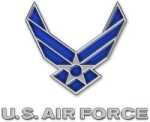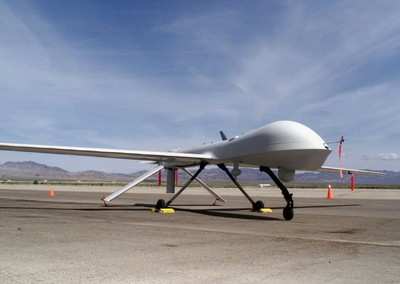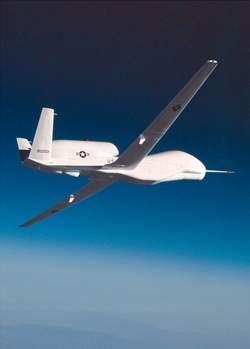FAA Slow to Approve Airspace, Cites Concerns Over Potential
Collisions With Civilian Aircraft
 While anyone who has served in the
military is familiar with the old adage of "Hurry up and wait," Air
Force officials are becoming somewhat impatient with the FAA.
According to a story produced by Minnesota Public Radio, military
officials say they need approval for restricted training airspace
for a planned unmanned aircraft base in Grand Forks, but according
to the story, the FAA says it's not ready to establish such an
airspace in North Dakota.
While anyone who has served in the
military is familiar with the old adage of "Hurry up and wait," Air
Force officials are becoming somewhat impatient with the FAA.
According to a story produced by Minnesota Public Radio, military
officials say they need approval for restricted training airspace
for a planned unmanned aircraft base in Grand Forks, but according
to the story, the FAA says it's not ready to establish such an
airspace in North Dakota.
The Air Force says 35 percent of all aircraft ordered by the
military in the next five years will be piloted from the ground by
remote control.
The Associated Press reports the plan for the new base is to
open a 35-mile by 45-mile airspace box near Devils Lake, which is
approximately 85 miles from Grand Forks. Currently, UAVs fly
primarily in restricted U.S. airspace, away from civilian
airplanes, helicopters and hot air balloons. The Associated Press
also reports that "in addition to the military use, drones will be
flown in the area by the U.S. Customs and Border Patrol and
University of North Dakota aerospace school."
Two unmanned planes, the Predator and the Global Hawk, will be
stationed at the new facility.

MQ-1 Predator UAV File Photo
MPR reports that, at a field hearing in
Grand Forks Monday morning, Sen. Byron Dorgan, (D-ND)
criticized both the Pentagon and the FAA for moving too slowly.
"There's no excuse for them not meeting time lines to find a way to
make certain that where you have decided to locate unmanned aerial
vehicles, you've also created the opportunity for training for the
[unmanned aerial vehicles] and their crews," Dorgan said.
Brigadier General Leon Rice said demand for what the military
calls remotely-piloted aircraft is outpacing the ability to train
crews.

Global Hawk File Photo
"Really our limiting factor now is the training airspace for the
crews themselves," Rice said. "We have six RPA platforms,
Predators, in the state right now in boxes, waiting to be opened up
and put into the sky."
The article goes on to explain that "unmanned aircraft can't be
flown in the U.S. except in cases where the FAA approves a
conditional waiver."
Military brass however, say a waiver won't meet their needs,
only a dedicated operating area will do the job.
But while the military cites example after example of its
competency with UAVs, reports indicate the FAA is has concerns
about the ability of the remotely controlled aircraft to avoid
collisions with civilian aircraft, said Hank Krakowski, head of the
FAA's air traffic arm, in the Minnesota Public Radio story.
"You know, we have to do this deliberatively," continued. "These
are unusual vehicles to enter in to the national airspace system;
they were designed for typically the war theater."
Krakowski said the FAA needs support of the Airline Pilots
Association and the general aviation industry before opening
airspace to unmanned aircraft. To not do that is a terrible waste
of taxpayers money, it diminishes our defense capability and just
doesn't make any sense," he said.
A statement on the North Dakota Pilot's Association Web site
dated September 9th, expressed the organization's concern for the
restricted airspace.
"As we in North Dakota know, unmanned aircraft cannot fly in the
regular national airspace system. Restricted airspace must be
created for them to fly which places an unacceptable burden on all
other users of our valuable airspace. The Air Force is
currently trying to restrict large portions of airspace in our
state in order to fly unmanned aircraft. The North Dakota
Pilots Association continues to believe this is the wrong
approach. Instead of restricting airspace, the military and
other users of unmanned aircraft must find a way to integrate them
safely into the current system. On Monday, Senator Dorgan
will be holding a hearing to discuss that very process.
According to Dorgan, integrating unmanned aircraft into the
national airspace system is essential to expanding both their
military and commercial use. “Solving this problem is
particularly important to North Dakota where unmanned aircraft
systems training and operations are part of Grand Forks Air Force
Base and the North Dakota Air National Guard missions.”
Representatives from the FAA, Air Force, and the Department of
Defense will be present at the meeting to discuss solutions to this
problem."
 ANN's Daily Aero-Linx (05.06.25)
ANN's Daily Aero-Linx (05.06.25) ANN's Daily Aero-Term (05.06.25): Ultrahigh Frequency (UHF)
ANN's Daily Aero-Term (05.06.25): Ultrahigh Frequency (UHF) ANN FAQ: Q&A 101
ANN FAQ: Q&A 101 Classic Aero-TV: Virtual Reality Painting--PPG Leverages Technology for Training
Classic Aero-TV: Virtual Reality Painting--PPG Leverages Technology for Training Airborne 05.02.25: Joby Crewed Milestone, Diamond Club, Canadian Pilot Insurance
Airborne 05.02.25: Joby Crewed Milestone, Diamond Club, Canadian Pilot Insurance





